Canada is a treasure trove of natural beauty — from the Algonquin Provincial Park in Ontario to Lake Louise and Banff National Park in Alberta and beyond. However, the Canadian wilderness hides danger behind its deceiving exterior: many toxic or dangerous plants and trees grow in the Great White North.
Further complicating the matter is that some trees are always toxic to humans or pets while others are only dangerous if touched or ingested in certain amounts. Understanding the risks associated with the most dangerous trees in Canada will keep you safe as you explore.
Discover the eight different trees in Canada you, your family, and your pets should avoid when venturing out into the wilderness. Also learn what factors contribute to a tree’s toxicity, how to identify dangerous trees in the woods, and safety precautions to take when hiking near dangerous or toxic trees.
Factors Contributing to Tree Hazards
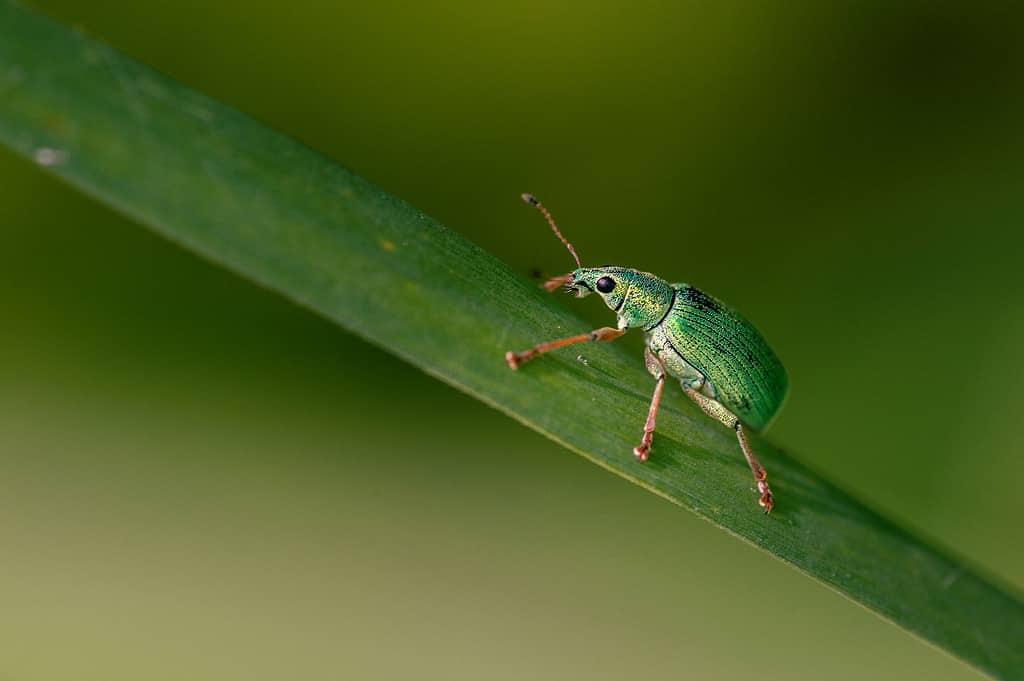
Weevils contribute to a tree’s danger with their harmful boring behavior.
©iStock.com/Wirestock
Tree hazards present themselves for a reason — the ecosystem surrounding it will affect and influence how a tree develops. Environmental factors, insects, and natural disasters all affect tree health and stability.
Temperature, air moisture, light, soil, and pollution have a massive effect on how a tree develops. Air temperature will affect the rate and size of tree growth, stunting it if it’s too cold or too hot. Drought and excess water can halt a tree from proliferating, and winter can decimate a young tree’s roots. Even air pollution will slowly kill a once-majestic tree.
Pests like weevils, maggots, boring insects, and beetles will feed on trees, raise their larvae in it, and eat their way out from the inside — destroying a tree’s bark and transport chains for delivering nutrients to every branch and leaf. Slow degeneration, as well as disease, will kill the trees pests use as their host.
The Process of Identifying Dangerous Trees
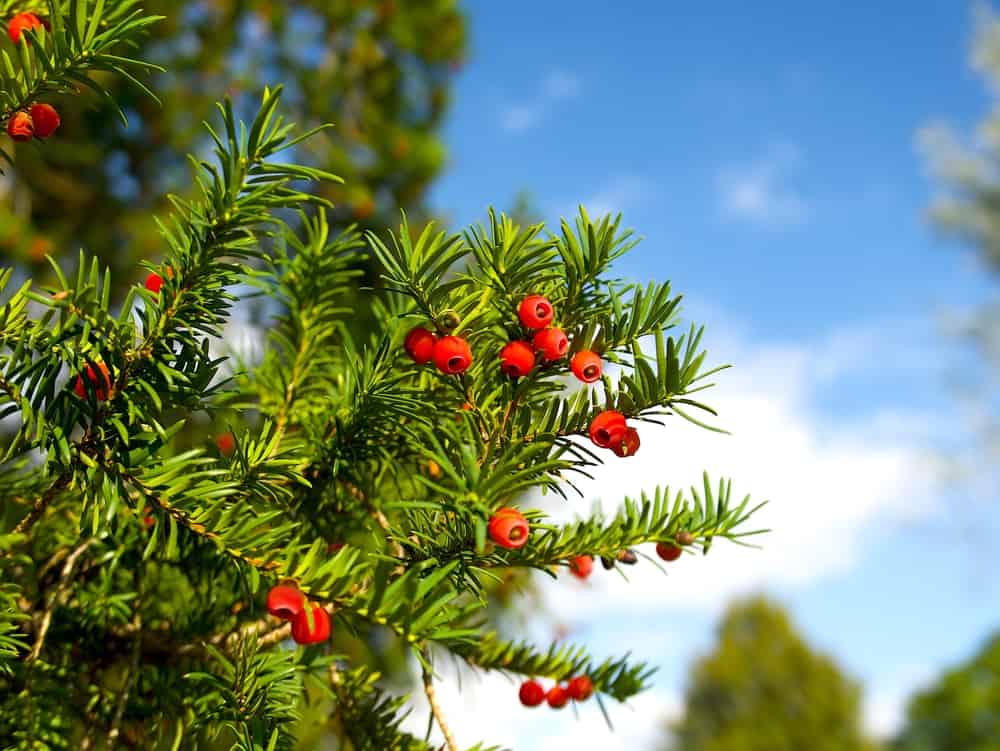
Yew trees remain one of the most dangerous trees in Canada. Nearly the entire fruit is poisonous.
©in_colors/Shutterstock.com
Have you ever been on a hike and taken a picture of a tree you thought was beautiful — until you went home and discovered the tree was poisonous? Here are several ways to avoid making this mistake again.
Look
Poisonous trees may not always have obvious signs of poison, but some tell-tale factors are hard to miss. The first place to look is leaves: if a tree’s leaves are yellow — especially in seasons outside of fall — this might mean the tree has toxins running through it. The leaves might look wilted, too. The poison in the tree can wilt and yellow its leaves.
Toxins can cause irregularities in the tree’s bark quickly after infection — and some species of poisonous trees have different-looking bark. Look for bumpy, discolored, or ruptured bark to discern whether or not a tree has toxins in it.
Smell
Believe it or not, most poisonous trees have an accompanying scent. If you’ve ever smelled poison ivy, you know the scent of poison. Poisonous trees can carry a perfume of ammonia or sulfur, meaning lightly smelling a tree can confirm for you if the plant in question is poisonous. Be careful not to get too close though; especially if the tree oozes sap.
Touch
Lastly, if you touch a tree (by resting on it, leaning on it, or accidentally) and your exposed body part begins to itch, bloom in a rash, or has some other sort of irritation, there’s a good chance the tree or its bark has a poisonous toxin. In these situations, it’s important to carry a first-aid kit.
If you’re rethinking your backpacking trip because of dangerous trees, don’t miss out on the fun you may have just because some poisonous types of trees exist! Consider taking a class or hiring a professional to hike with you and help you avoid the most dangerous trees in Canada.
A large portion of Canada’s forests are on publicly owned land, meaning the residents have a shared responsibility of keeping the forests safe, healthy, and protected. As such, conservation efforts and sustainable forest management — including the control of invasive or dangerously-poisonous plants — remain a top priority.
The Most Dangerous Trees in Canada
Cottonwoods
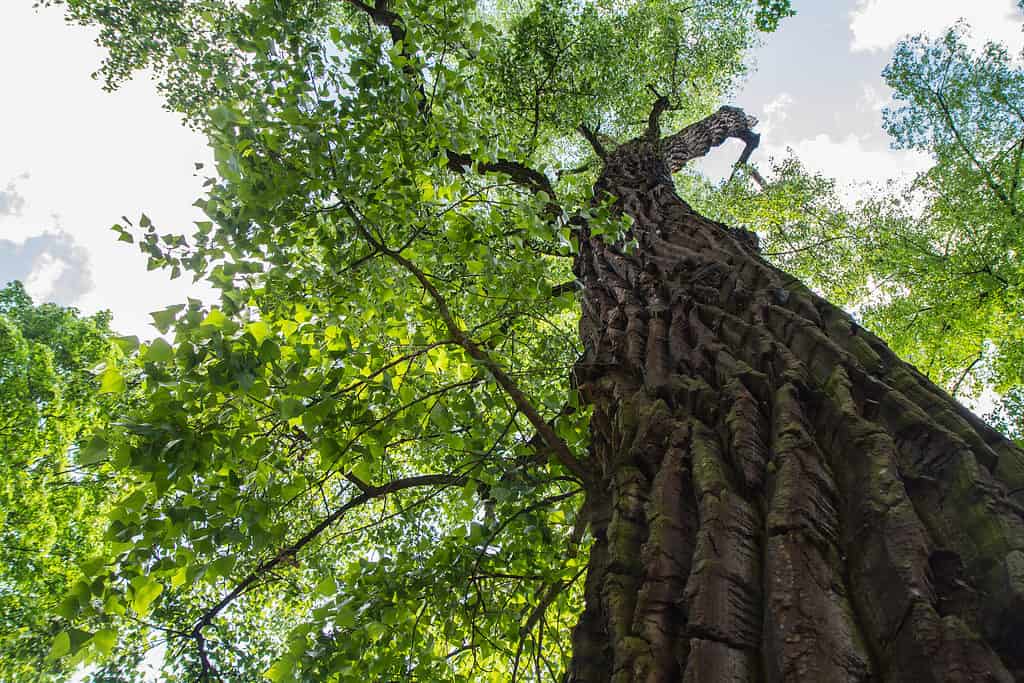
Eastern cottonwood trees are tall but unsteady.
©iStock.com/teine
Canada is native land to five different cottonwood trees: the Black cottonwood (Populus trichocarpa), the Eastern cottonwood (Populus deltoides ssp. deltoides), the Lanceleaf cottonwood (Populus x acuminata), the Narrowleaf cottonwood (Populus angustifolia), and the Plains cottonwood (Populus deltoides ssp. monilifera). Cottonwoods have heart-shaped leaves, grow up to six feet in a year, and have porous bark that makes a whistling sound when the wind blows through it. Female seed-producing cottonwoods also grow a fluffy, cotton-like “flower.”
Found throughout the southern parts of Canada, especially on the border of the Great Lakes and in British Columbia, cottonwoods pose risks to humans hiking from their sheer size. These large trees often mature too fast — which puts them at risk of growing weak wood that splinters or breaks easily. Cottonwoods can suddenly buckle under the weight of their branches and leaves and come down on unsuspecting hikers and tourists. Furthermore, these trees are prone to disease, rot, and infestation that may negatively affect humans or pets who come into contact with it.
Black Walnut
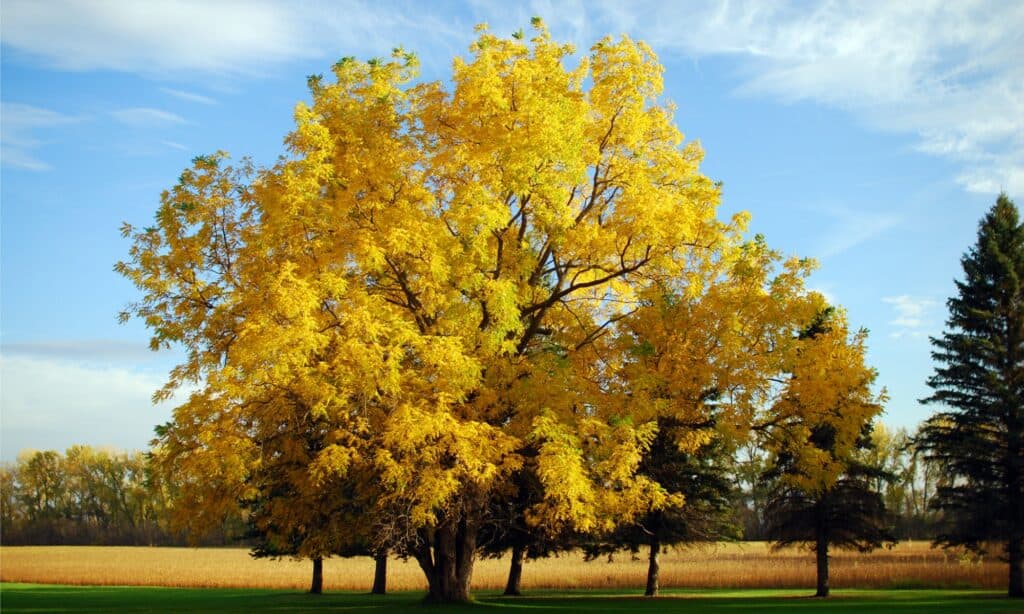
Black walnut trees are native to the Eastern U.S. and Canada.
©iStock.com/jdt01fgo
This deciduous, edible-fruit-producing tree remains native to Canada and is poisonous to humans, animals, and other plants. It is commonly found in moist, low-lying areas in Southwestern Ontario.
Black Walnuts remain an interesting species of tree, as they’re valued for their timber and shade but produce a dangerous chemical that can decimate a garden or other plants around it. The chemical, juglone, can cause serious effects. In plants, juglone will poison and wilt plants within its root radius (about 50 to 60 feet), though the most concentrated amount of juglone is present in the soil directly under the trunk.
As the Black Walnut produces fruit for human consumption (black walnuts), it’s a wonder that this tree poses a risk to people. Healthy trees and their fruit do not; however, if and when a tree is damaged and pre-juglone gets oxidized into juglone, even ingesting a small amount can have devastating consequences.
Poison Ivy
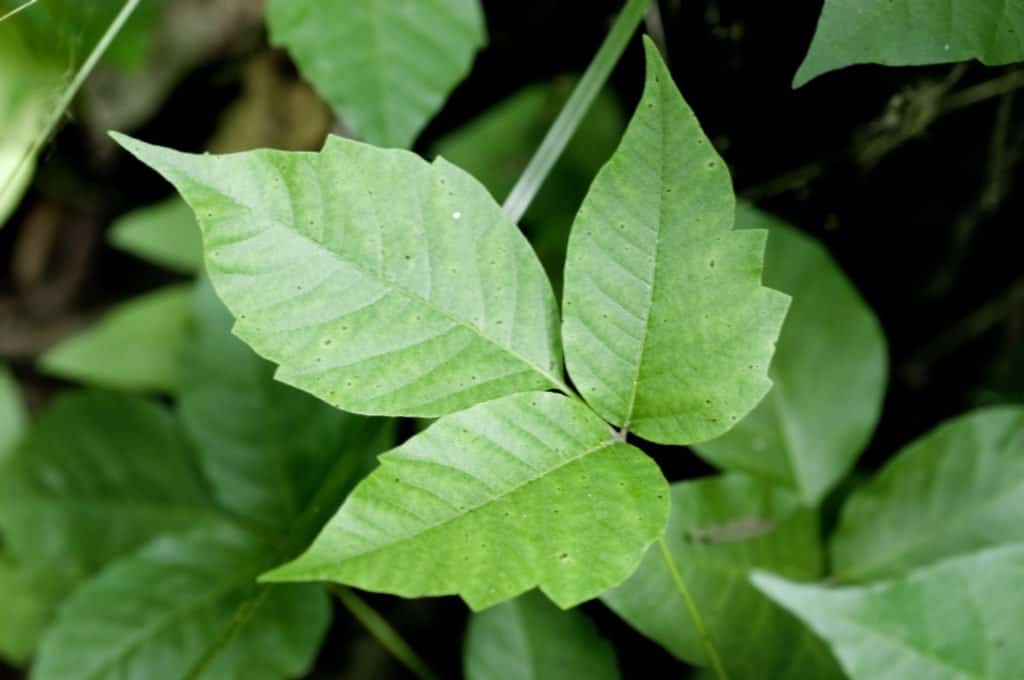
Poison ivy will cause irritating rashes.
©Tim Mainiero/Shutterstock.com
Toxicodendron radicans, or poison ivy, is a deciduous, native tree to Canada found in every province, save Newfoundland. For some animals, it’s a food source. For others and humans, it’s an annoying and irritating plant that causes itchy rashes. Like its cousins poison oak and poison sumac, the urushiol oil excreted by broken or bruised parts of the plant elicit skin irritations like contact dermatitis.
If you find a heap of poison ivy and choose to burn it to get rid of it, be sure to wear a mask or avoid the area for several days. Smoke from burnt poison ivy has the same effect as touching the urushiol oil; the smoke will coat the lining of your lungs and can pose serious — even fatal — breathing problems in humans and animals.
You can identify poison ivy by its tell-tale three-leaflet structure. The middle leaflet is always larger than the two others. Poison ivy also produces flowers and berries; neither of which you should collect or eat.
Norway Maple

The Norway Maple’s leaves can poison your dog or get lodged in its GI tract.
©iStock.com/Marina Denisenko
The Acer platanoides tree is a naturalized type of tree in Canada mostly found in British Columbia, southern Ontario, and Newfoundland. Not only does the tree become invasive and stunt or halt other trees’ growth, but it’s also toxic for humans and animals to use.
Norway Maple trees can cause a variety of effects in humans, from skin irritation to respiratory effects akin to asthma. They have shallow roots and grow in dense clumps, casting shade, which makes it harder for young seedlings of other species to take root and flourish. The Norway Maple also releases toxins into the environment that negatively affect soil fungi and microbes.
As for your pets — it’s a good idea to prevent them from eating any leaves, but try to avoid the Norway Maple. Other native species of maple, and plants like the Red Oak, are pretty safe for dogs to ingest a few leaves without consequences. However, the more leaves dogs ingest, the more gastrointestinal stress they’ll be under, and it may end in either poisoning or a very expensive trip to the vet.
Yew

Almost every part of a Yew tree is poisonous to pets and humans.
©iStock.com/Leo Malsam
The coniferous yew trees of Canada are toxic to humans and animals, making it a dangerous tree. Four species exist; two of which are native and the other two were introduced.
- Canada yew (Taxus canadensis): Native.
- English yew (Taxus baccata): Introduced.
- Japanese yew (Taxus cuspidata): Introduced.
- Western yew (Taxus brevifolia): Native.
All yew trees hold poison, but the Japanese yew tree is regarded to be the most poisonous of those that grow in Canada, followed closely by the English yew. Naturally, these grow in shady areas and can be found across Canada in Newfoundland, Ontario, Alberta, and British Columbia. Nearly every part of the tree is poisonous, save the fleshy part of the berry. However, the seed inside the flesh is the most toxic part, so it’s best not to eat any of a yew tree.
Yew trees proffer a deadly alkaloid called taxine within its leaves, berries, and seeds. It’s cardiotoxic, meaning the chemical will stop your heart, almost on command. In some cases, you won’t see additional symptoms — which is why it’s incredibly important to keep an eye on small children and dogs and avoid accidental ingestion.
Poison Oak
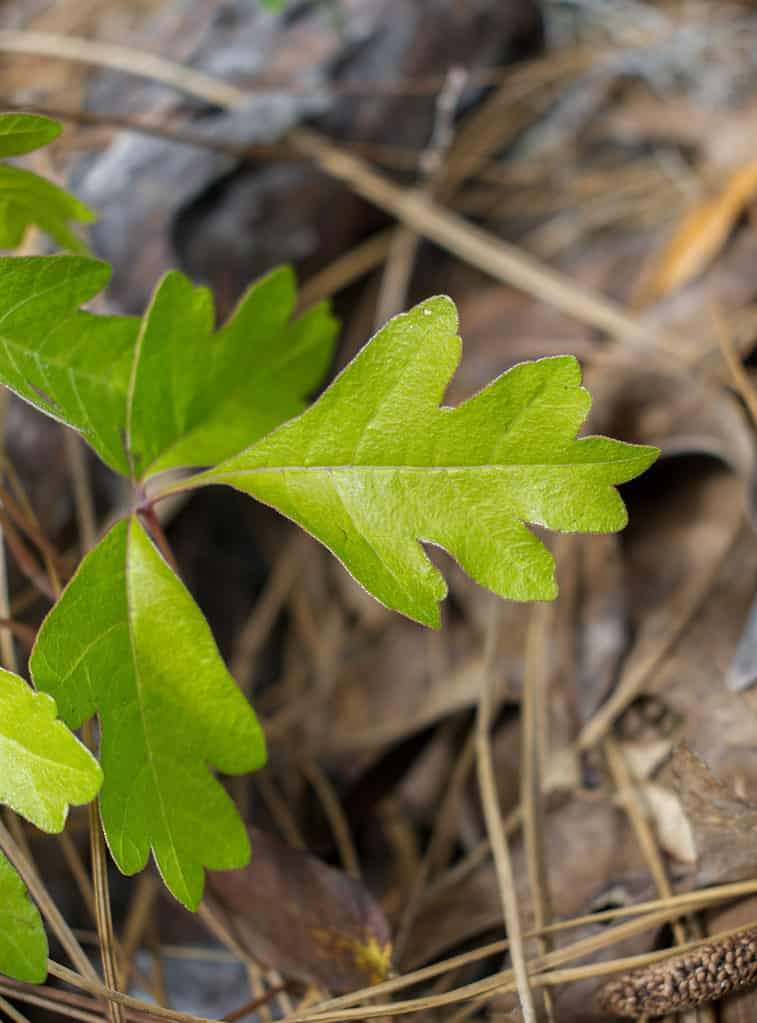
Poison oak has many of the same qualities as its cousins, poison ivy and poison sumac, but has a distinctive leaf.
©iStock.com/Dan Rieck
Did you know the Poison Oak (Toxicodendron pubescens) has the same number of leaves as poison ivy and looks incredibly similar? In fact, you could call poison oak the fraternal twin of poison ivy — the effects of its urushiol on humans and animals is the same, too.
Poison oak looks more like true oak leaves, though they’re not connected to the true oak family and still have three leaflets on their stems like poison ivy. The rounded tips give away their identity when compared to poison ivy and poison sumac. In addition, poison oak will turn a yellow-orange color in the fall, while its cousins stay the same color year-round.
You’ll find poison oak throughout some remote places in Canada, like Vancouver Island, as well as some nearby islands.
Black Locust
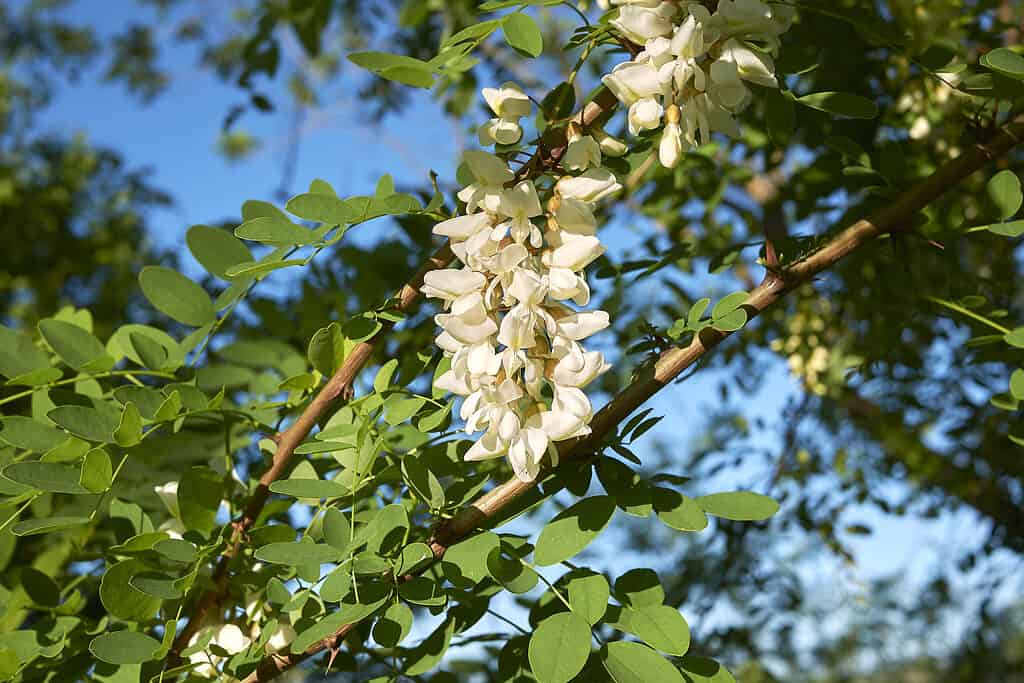
A Black Locust tree’s white flowers will poison your dog or cat.
©iStock.com/seven75
While not native to Canada, the Black Locust (Robinia pseudoacacia) tree has been naturalized in much of Ontario, Nova Scotia, and British Columbia. Its bark and seeds remain poisonous to humans but some insects and mammals are immune and feed on them. Early tribes indigenous to the regions in which Black Locusts grew would use the inner wood of the tree as poisonous arrows for enemies.
Punctures from the thorns or branches of a Black Locust may result in pain, itching, swelling, and blistering. While Black Locusts produce a pretty flower and seedling pods, make every effort to keep your dogs or cats away from them. They are poisonous if ingested.
A Black Locust tree has hard, rot-resistant wood and is a member of the pea family. Like cottonwood varieties, the Black Locust tree is known as a “tree killer” because it will suppress native tree saplings. Black Locust trees also enrich the soil around them with nitrogen, thereby allowing itself and other nonnative species to grow aggressively, even in poor soil.
Poison Sumac
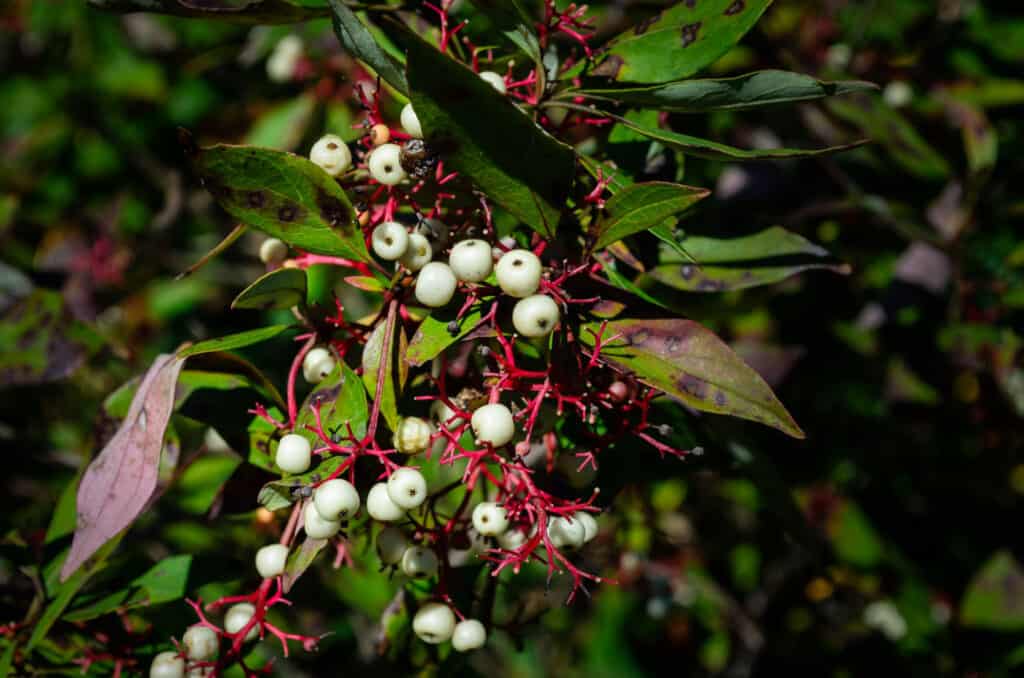
The white berries found on poison sumac should make identification easy compared to poison ivy and poison oak.
©G_r_B/Shutterstock.com
Poison sumac (Toxicodendron vernix) is a native, deciduous tree in Canada. Leaflets of poison sumac are often tear-shaped and green with a red tint on them; there are between seven and 10 leaflets on a stem. The oil released from poison sumac — known as urushiol — causes contact dermatitis in humans. Even after a poison sumac tree or shrub dies, the poison remains active, making this a dangerous tree to avoid in Canada.
While you can’t contract the poison sumac reaction from another affected person, you can contract it from any clothes or item the leaf’s oil has touched. Symptoms of a poison sumac reaction include:
- Itching.
- Burning.
- Swelling.
- Blistering.
The symptoms will appear hours or days after exposure and can last for the better part of a month. Those with preexisting conditions and allergies may have harsher symptoms than those described above.
Most of the time, you can find poison sumac in wooded and swampy areas, so hikers in the southern parts of both Ontario and Quebec should ensure their legs are covered and keep a close eye for this low-to-the-ground tree.
Safety Precautions and Risk Mitigation
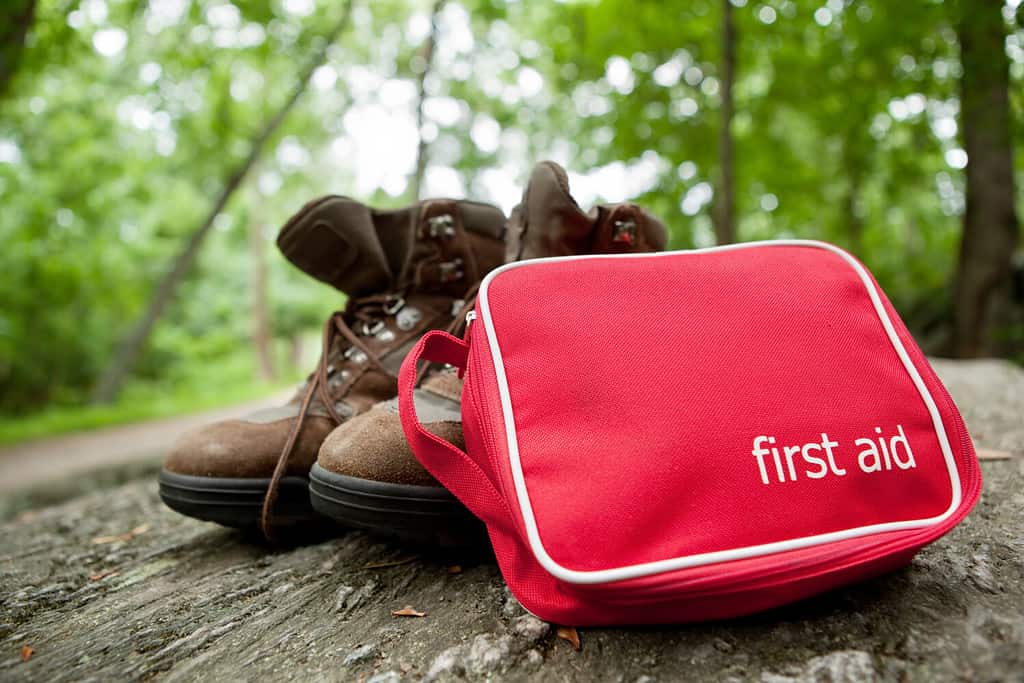
Prepare yourself with the right tools and resources for your next wilderness adventure around the most poisonous trees in Canada.
©eurobanks/Shutterstock.com
Avoiding the most dangerous trees in Canada isn’t rocket science. Use a few common sense best practices and you should make it out of the woods without any issues at all.
First, don’t eat strange flowers or berries you see — even if you’re hungry. The best herbalists consult friends and their studies before ingesting what they forage, so casual hikers and explorers should do the same. If you’re learning how to forage and want to collect what you believe are edible leaves, weeds, berries, nuts, and flowers, be sure you have a handy guide with you that helps identify what the plant is — and carry a first aid kit for any and all ailments that might befall you should you pick the wrong plant.
Wear protective clothing as much as possible. Long shirts and pants can go a long way in preventing irritating rashes from poisonous trees and shrubs. Even if it’s the summer, a light long sleeve shirt and pants, or long socks and longer shorts can save your ankles, calves, and arms from painful welts and itchy blisters.
Always wash your hands and body after a hike. In addition to finding unwanted tagalongs like ticks or chiggers, taking a shower or thoroughly washing your hands can rid your skin and clothes of any toxic chemicals or oils you may have picked up during the day.
Conclusion
Hiking, camping, and exploring Canada is a wonderful adventure. The country offers some of the most stunning nature views on Earth, and its residents remain one of the friendliest bunches in the world. When venturing into Canada’s provinces, keep yourself safe by understanding what dangerous trees grow around your area and how to treat any reactions you may have if you come in contact with them.
Next, learn more about Canada, Canadian plants, animals in Canada, or how Canada got its flag.
The photo featured at the top of this post is © ShutterstockProfessional/Shutterstock.com
Thank you for reading! Have some feedback for us? Contact the AZ Animals editorial team.






